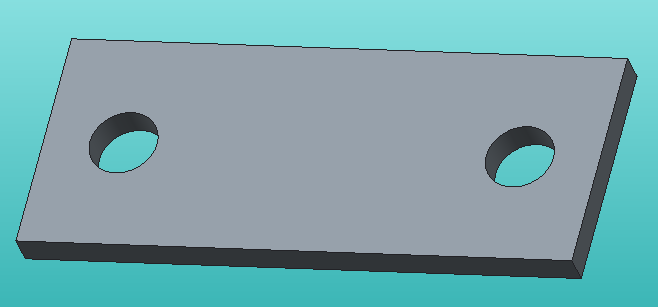Community Tip - If community subscription notifications are filling up your inbox you can set up a daily digest and get all your notifications in a single email. X
- Community
- Creo+ and Creo Parametric
- 3D Part & Assembly Design
- Should flat parts be drawn with sheet metal?
- Subscribe to RSS Feed
- Mark Topic as New
- Mark Topic as Read
- Float this Topic for Current User
- Bookmark
- Subscribe
- Mute
- Printer Friendly Page
Should flat parts be drawn with sheet metal?
- Mark as New
- Bookmark
- Subscribe
- Mute
- Subscribe to RSS Feed
- Permalink
- Notify Moderator
Should flat parts be drawn with sheet metal?
So I just had our Creo rep in here and we were talking about simulate. He was talking about shell pairs and a bunch of other stuff that I don't really understand yet, because I haven't used it much. My question is, should I be starting my part as sheet metal if it's simply a flat plate with some holes in it?
Before we went to creo I hated doing that, because the only way to add material was to add a flange at 0° which was a huge pain. Also converting to sheet metal made things harder to select to change them.
Both ways got what I needed done, because I wasn't doing any type of strength analysis in the software (we just build everything heavy 🙂
Now they've added the planar command to add material and that seems to work pretty well, I could probably start flat parts as sheet metal. Would this make things easier for me in the future if we decided that we need to do some strength analysis on models? Below is an example of the type of part that I am talking about.
This thread is inactive and closed by the PTC Community Management Team. If you would like to provide a reply and re-open this thread, please notify the moderator and reference the thread. You may also use "Start a topic" button to ask a new question. Please be sure to include what version of the PTC product you are using so another community member knowledgeable about your version may be able to assist.
- Labels:
-
General
- Tags:
- sheet metal
- simulate
- Mark as New
- Bookmark
- Subscribe
- Mute
- Subscribe to RSS Feed
- Permalink
- Notify Moderator
What is your downstream process? Do you manufacture in-house or buy from other shops? Do you have to supply flat pattern files to manufacturing?
You can start in sheetmetal with a sketch and if the size changes, just edit the sketch, just like other modeling, no need to add a flange at 0°.
For a flat plate with holes solid model or sheet metal isn't much different in the modeling phase.
- Mark as New
- Bookmark
- Subscribe
- Mute
- Subscribe to RSS Feed
- Permalink
- Notify Moderator
I'm good on the manufacturing process and the modeling. We make our own flat patterns here, and manufacturing doesn't care on flat part whether it's sheet metal or solid.
I guess I should have mentioned that that parts can get more complicated geometry than the part shown where adjusting the initial sketch isn't feasible. That's fixed in creo anyways with the planar command so that is a non issue.
My question is, does it matter for simulation if the part is sheet metal or not?





